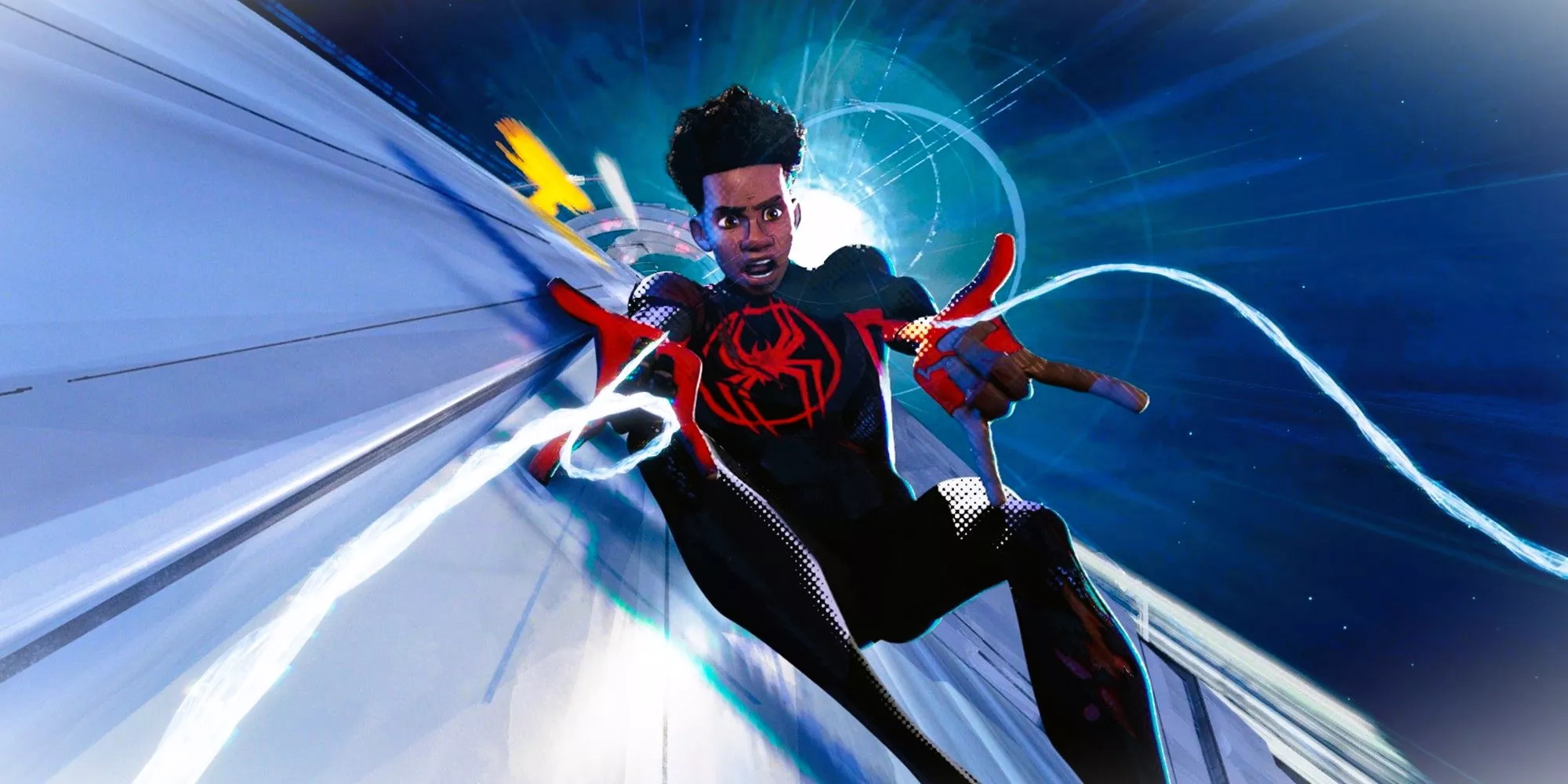Upon the release of “Spider-Man: Into the Spider-Verse” in 2018, it became evident that Sony Pictures Animation had crafted something exceptional. With its sequel, “Spider-Man: Across the Spider-Verse,” Sony further solidifies this series as one of the most outstanding film franchises to date. The movie is helmed by directors Joaquim Dos Santos (known for “The Legend of Korra“), Kemp Powers (from “Soul”), and Justin K. Thompson (associated with “The Angry Birds Movie”). They bring their creative vision to life based on a script crafted by Phil Lord, Chris Miller (credited for “The LEGO Movie”), and David Callaham (a contributor to “Shang-Chi and the Legend of the Ten Rings”). From start to finish, “Spider-Man: Across the Spider-Verse” is an extraordinary cinematic experience that amplifies the stakes, emotions, and heart through its captivating artistic animation.
Continuing the narrative over a year after the events of “Into the Spider-Verse,” “Across the Spider-Verse” reunites us with Miles Morales (Shameik Moore), who has matured and embraced his role as Spider-Man. Nevertheless, he yearns for his friends, especially Gwen Stacy (Hailee Steinfeld). Gwen resurfaces in pursuit of a nemesis that had eluded Miles, the Spot (Jason Schwartzman). Determined to assist Gwen, Miles embarks on a quest to confront this multiversal menace. In this endeavor, Gwen introduces him to a collective of Spider-People, including Miguel O’Hara (Oscar Isaac), Jessica Drew (Issa Rae), and others forming the Spider-Society. However, tension arises between Miles and Miguel regarding their approach to handling the Spot. This conflict places Miles in opposition to Spider-Man 2099 and the wider Spider-Society as he strives to return home to his parents, Jefferson (Brian Tyree Henry) and Rio (Luna Lauren Vélez).

Whereas “Into the Spider-Verse” depicted Miles as a young individual grappling with his newfound powers and the journey to becoming a hero, “Across the Spider-Verse” propels the story forward, presenting Miles as a teenager seeking his place in the world. As he yearns for a sense of belonging, his beliefs—both in himself and his role as a hero—are tested through interactions with Gwen, Miguel, and the Spider-Society. The movie’s emotional core is solidified through Miles’ relationships with his parents, grounding the narrative with a profound sense of heart. Addressing a more intricate emotional arc, “Across the Spider-Verse” successfully navigates these complexities while staying true to its thematic undertones. Although the emotional journey reaches resolution, it is worth noting that “Across the Spider-Verse” was initially designated as “Part 1,” contributing to the sense that the story is only partially told. As a sequel, “Spider-Man: Beyond the Spider-Verse,” is already slated for release in 2024.
Beyond its heartfelt narrative, “Across the Spider-Verse” pushes the boundaries of animation. Building upon the innovative animation styles seen in “Into the Spider-Verse,” this sequel showcases a vast array of unique styles to bring numerous Spider-Man characters to life. While certain main characters share a degree of visual similarity, particularly with Spider-Punk standing out, the film immerses viewers in a visually intricate tapestry, almost overwhelming in its complexity. The integration of music echoes the approach of the first film, contributing to the overarching theme of maturation.

The talented ensemble cast of “Across the Spider-Verse” impeccably complements the movie’s visual spectacle, delivering subtly nuanced performances. Moore masterfully portrays Miles as a more mature and self-assured Spider-Man, while still capturing the vulnerability of a teenager navigating self-discovery. Steinfeld shines as Gwen, granted greater depth in “Across the Spider-Verse,” as her origins and relationship with her father, George Stacy (Shea Whigham), are further explored, juxtaposing against Miles’ dynamics with his parents. The performances of Henry and Vélez as Jefferson and Rio are equally remarkable, forming a convincing familial bond with Moore. The supporting cast also contributes significantly, although none detract from the compelling portrayals by Moore and Steinfeld.
Ultimately, “Spider-Man: Across the Spider-Verse” is not merely an exceptional animated film; it stands as a remarkable cinematic achievement. This superhero tale transcends the genre, resonating with audiences of all ages through its poignant coming-of-age narrative, set within the backdrop of a universe where the Spider-Society thrives, paying homage to Spider-Man’s enduring legacy across various media. Consequently, “Across the Spider-Verse” is an essential viewing experience, poised to emulate the accolades earned by its predecessor, including potential Oscar recognition. The film’s stunning visuals and emotionally resonant storytelling warrant multiple viewings, guaranteeing a continued sense of awe and entertainment with each watch.
